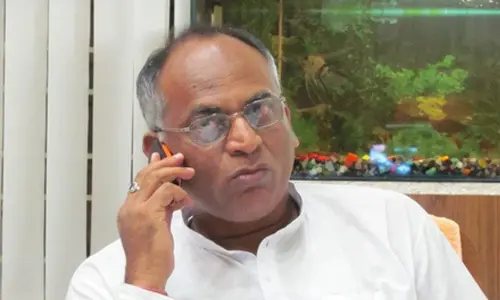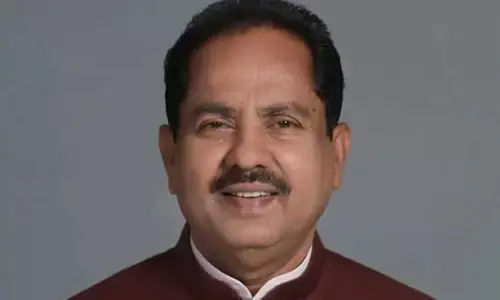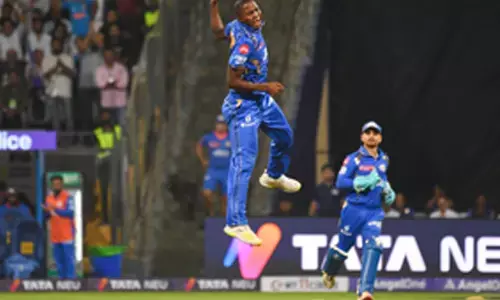Nabakalebara The enigma of Lord Jagannath

Nabakalebara The Enigma Of Lord Jagannath. The day begins and ends with Lord Jagannath. Such is His influence on the life of Odiyas that the Lord of Puri is all pervasive – in art, culture, literature, customs and traditions. But He is an enigma.
Yesterday (July 18) marked the first Puri Jagannath Rath Yatra after the Lord, his brother Lord Balabhadra and their sister Devi Subhadra assumed new ‘bodies’ in a complex and elaborate ceremony called Nabakalebara last month, after a gap of 19 years. This year’s Nabakalebara happened to be the first in the new millennium as well as the first to be televised live. And, it turned out to be the most controversial one, too
.jpg)
There is a saying in Odisha: The day begins and ends with Lord Jagannath. Such is His influence on the life of Odiyas that the Lord of Puri is all pervasive – in art, culture, literature, customs and traditions. But He is an enigma.
Lord Jagannath is the only deity who discards his body, along with brother Balabhadra and sister Subhadra, the triumvirate of Puri temple, once in 12-19 years and enters a new ‘body’ amidst elaborate rituals. Another unique feature is the statues are not cast in metal or sculpted out of stone but carved out of wood. One more special feature of the Puri temple is the deities in the sanctum sanctorum are two brothers and their sister unlike in other shrines in India where Gods are worshipped along with their consorts.
More surprising for the first time visitors, particularly pilgrims from outside Odisha, is the trio don’t resemble any of the familiar figures we have in mind as Gods and Goddesses. Round faces with wide-open eyes and stumped hands could hardly be related to divine beings in popular imagination. But Lord Jagannath is believed to represent and symbolise all important Hindu cultures that have flourished in this country from Vedic times. These include Puranic and Tantric, the sects of Shiva and Vishnu, the offshoots of Hinduism – Jainism and Buddhism -- and pagan cults of aboriginal tribes. We can find all these flourishing in Odisha, a living testimony to the universality of Lord Jagannath.
What is interesting is, every member of various cults and sects, not to mention Hindus, sees their object of devotion in Lord Jagannath when they visit Him. That explains why He is called the God of the Universe and revered by millions.
Odisha, being the cradle of many dynasties, Lord Jagannath had been claimed by the reigning ruler of the time. At the peak of Buddhism, in the middle ages, Tantrik Buddhism had evolved and flourished in that state. According to Manoj Das, in the Legends of Sri Jagannath, “it was then that Sri Jagannath was portrayed as the image of the Buddha; Balabhadra as that of Samgha and Subhadra as that of Dharma. Sudarshana, the weapon of Krishna which is also worshipped as a deity from an unknown past, was left out of this interpretation.”
During the reign of Jain King Kharavela, Sri Jagannath was described as a Jain deity. Among the tribal claims that is often mentioned and traces its origin to a legend is Shavara cult that is said to have worshipped logs as Nila Madhava. That is Vaishnavaite cult. For Hindus, however, the trio represent Lord Krishna, his brother Lord Balabhadra and their sister Devi Subhadra and the Puri temple the epitome of sibling love and affection.
Nevertheless, Puri is considered one of the holiest places by Hindus and its annual Rath Yatra is known all over the world for its grandeur, pomp and scale of operation. The pulling of the giant chariot of Sri Jagannath is a spectacle to watch. This year, it was held on July 18 and it was special because the deities that were taken out on the chariot are new. They were installed on June 15 at a special ceremony called Nabakalebar.
Nabkalebar or Navkalevar literally means new body. During the ceremony, the old wooden images of Lord Jagannath, Lord Balabhadra, Devi Subhadra and Sudarshana (weapon) will be replaced by new ones amidst complex rituals that stretch for months. The most important and the holiest one among all the ceremonies is the transfer of a mysterious matter called Daru Brahma (prime soul enshrined in wood) or Brahma Padartha (supreme matter) from the old to the new statue of Sri Jagannath amidst utmost secrecy in the middle of a moonless night as decided by astrological calculations and as dictated by tradition and custom.
The Nabakalebara ceremony will take place in the year when double Ashadha occurs (June-July). Generally, it comes once in every 12 years, but not always. It can also take place in eight, 16 or 19 years, depending upon the auspicious day, which is again decided by the hereditary temple priests known as Daitapatis according to intricate astrological calculations.
Nabakalebara ceremony dates back to centuries. When it was first celebrated is not known. But records show it was held in 1912, 1931, 1950, 1969, 1977 1 and 1996. This year’s Nabakalebara came after 19 years and happened to be the first in the new millennium as well as the first to be televised live. And, it turned out to be the most controversial one.
The first process in the highly structured Nabakalebara rituals is the search for neem trees (darus) with divine signs for wood to carve out new idols. A team consisting of 82 members, including 20 daitapatis, will be sent in all the four directions under the direction of a team leader. Before setting foot for the sacred journey, the priests pray to Goddess Mangala in her temple and sleep with faces down. According to the legend, the Goddess will appear in their dreams and tell them the exact locations of all the four sacred neem trees. Then the teams will go in search of them and the selection of wood is taken up in the order of Sri Sudarshan, Lord Balabhadra, Devi Subhadra and Lord Jagannath.
The signs that indicate the divine nature of darus include chakra, cobras near the sacred trees; a tamarind tree nearby; the neem tree should be straight up to 10 to 12 feet; no bird nests on the tree top; a funeral place in the vicinity. Once the trees with all these indications are found, they are cut according to pre-defined procedures and brought to Puri for carving out deities. All the customs, rituals and hallowed procedures associated with the preliminary process of securing sacred wood have been followed scrupulously all these years.
But, not this year.
While the selection of the search team leader had no problem; picking up his deputy from among the Daitapatis had proved to be a tough task as different factions in the servitor community had staked claims. Not to displease anyone, the Shree Jagannath Temple Administration (SJTA) had named four deputies, throwing the time-honoured traditions to the wind. That was the beginning of Nabakalebara festival going awry.
Next to shock Odiyas and devotees of Lord Jagannath who attach great importance to Nabakalebara and its sanctity was that the team leader had reportedly confessed on a local TV channel that there was no dream. In what the local media had described as scandals of unprecedented proportions, the search missions, instead of living austerely during their holy yatra, were seen moving around in SUVs, giving TV interviews and uploading their selfies on the social media.
The unholy behaviour of servitors and the frivolous way the neem trees’ selection had been done raised questions about the genuineness of the wood selected and the logs brought to Puri for making the deities. True to public fears, two of the logs had not met the stringent conditions laid out in the Nabakalebara ritual texts. To top it all, all the four neem trees were reported to have been found in a small area in Jagatsinghpur district, which, again, cast doubts on the holy mission.
More allegations followed, such as collection of money through sale of ‘holy’ neem leaves and hundis placed near the logs during the fortnight that the priests were supposed to be conducting rituals in utmost secrecy and with absolute devotion. Even some ministers were reported to have visited the ‘no-entry’ sites.
The logs were then transported on wooden carts to Puri where the deities had been carved out in a special enclosure. According to the temple manuals, except the carpenters and their team head, none should enter the premises to see how they do their work. But again, there were suspicions that influential people had a dekko.
However, the most sacrilegious act was, according to Jagannath cult followers, the way the Brahma Pathardha was transferred from the old to new idols on the night of June 15. The supreme ritual, instead of being completed in the dead of night (power would be switched off in Puri town), went on till evening next day.
The delay, apparently, was due to a row among Daitapatis over entry into the enclosure where Brahma Paribartan (soul transfer) took place. Traditionally, four blind-folded chief priests would do it without anyone present. But this time, reportedly, dozens had barged in, some even recording the process on cameras and uploading on social sites.
The scandals surrounding the 2015 Nabakalebara festival in general and the servitors in particular have left the devout, seers and saints fuming. The public has turned its anger against the BJD government of Naveen Patnaik. Clearly, it’s a mute witness to the goings-on at Puri temple and allegations are galore that some ruling party ministers are in league with the powerful and influential servitors’ community that controls the affairs of Sri Jagannath temple and its finances. There is a demand that the temple should be run on the lines of Tirumala-Tirupati Devasthanam Board. Given the kind of political-financial clout the servitors wield, such a proposal will never be accepted.
However, post-Nabakalebar ignominy, seers and saints have condemned the way the Brahma Paribartan was conducted and demanded corrective measures such as streamlining the management and affairs of the Jagannath temple. Puri King Gajapati Dibya Singh Deb, who is considered as the living representative of Lord Jagannath, too has lent his support to the holy men’s demand.
In fact, friction among some sections of servitors has been brewing and it surfaced last year just before Rath Yatra. The row centred on the practice of some servitors allowing visitors to climb the chariots and touch the feet of deities during Rath Yatra. Obviously, this practice was introduced to make money: the more money one offers the closer one gets to gods riding the chariots. For the precise reason, both public and the Shankaracharya of Puri, Swami Nischalananda Saraswati, wanted the state government and Sri Jagannath Temple Management Committee end the practice. But the servitors had opposed the move, fearing loss of huge income, and threatened not to cooperate with the administration during the Rath Yatra if the devotees are not allowed to climb the chariots. Worse, if the proposal was implemented, they had threatened not to allow Shankaracharya and his disciples to climb the chariots and seek divine blessings.
After a series of talks between the temple management and servitors, they relented and said only Shankaracharya would be allowed, not his disciples. Custom and tradition had it that Puri Shankaracharya would flag off the Rath Yatra. The practice had never been dishonoured except last year when he refused to be dictated by servitors. Rath Yatra started without the blessings of Puri Shankaracharya, while the state government banned devotees climbing the chariots and touching the idols.
Followers of Jagannath cult who had hoped that the servitors would be reined in and the temple affairs would be set right were crestfallen after the Nabkalebara. Is it money-politics or the overall moral decay in the priestly class that is responsible for the state of affairs?
S Madhusudhana Rao














